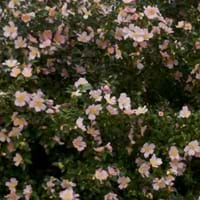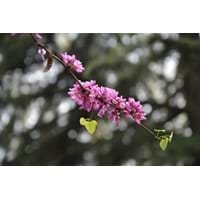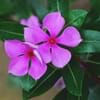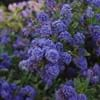Life Span
Perennial
Perennial
Origin
Japan
Southern Europe
Types
Not available
Not Available
Habitat
Dappled Shade, Hedge, Shady Edge, Woodlands
Lower slopes, Semi arid regions
USDA Hardiness Zone
7-9
6-9
AHS Heat Zone
9-1
Not Available
Sunset Zone
4, 5, 6, 7, 8, 9, 12, 14, 15, 16, 17, 18, 19, 20, 21, 22, 23, 24
Not Available
Habit
Upright/Erect
Oval or Rounded
Flower Color
White, Gold
Light Purple, Pink, White
Flower Color Modifier
Not Available
Bicolor
Fruit Color
Black, Brown
Brown
Leaf Color in Spring
Dark Green
Green, Dark Green
Leaf Color in Summer
Dark Green
Green, Dark Green
Leaf Color in Fall
Dark Green
Green, Dark Green
Leaf Color in Winter
Dark Green
Light Green
Leaf Shape
Elliptic
Heart-shaped
Plant Season
Spring, Summer, Fall, Winter
Spring, Summer, Fall, Winter
Sunlight
Partial Sun, Partial shade
Full Sun, Partial Sun
Type of Soil
Loam
Clay, Loam, Sand
The pH of Soil
Acidic, Neutral
Acidic, Neutral
Soil Drainage
Well drained
Well drained
Bloom Time
Fall, Late Fall, Early Winter, Winter
Spring, Late Spring
Tolerances
Drought, Full Sun, Variety of soil types
Drought
Where to Plant?
Ground, Pot
Ground
How to Plant?
Cuttings, Grafting, Layering, Seedlings
Seedlings, Stem Cutting
Plant Maintenance
Medium
Medium
Watering Requirements
Needs less watering
Average Water Needs
In Summer
Lots of watering
Lots of watering
In Spring
Moderate
Moderate
In Winter
Average Water
Average Water
Soil pH
Acidic, Neutral
Acidic, Neutral
Soil Type
Loam
Loam, Sand
Soil Drainage Capacity
Well drained
Well drained
Sun Exposure
Partial Sun, Partial shade
Full Sun, Partial Sun
Pruning
Remove damaged leaves, Remove dead branches, Remove dead flowers, Remove dead leaves
Remove damaged leaves, Remove dead branches, Remove dead leaves
Fertilizers
8-8-8, Apply 10-10-10 amount, Fertilize in early to mid-summer, fertilize in spring, slow-release fertilizers
All-Purpose Liquid Fertilizer
Pests and Diseases
Canker, Galls, Petal blight, Root rot
Coral Spot, Red blotch, Verticillium Wilt
Plant Tolerance
Drought, Full Sun, Variety of soil types
Drought
Flower Petal Number
Single
Single
Fragrant Bark/Stem
No
Yes
Foliage Texture
Medium
Medium
Foliage Sheen
Glossy
Glossy
Attracts
Hummingbirds, Not Available
Birds, Butterflies
Allergy
Not Available
Not Available
Aesthetic Uses
Beautification, Cottage Garden, Showy Purposes
Beautification, Ornamental use, Showy Purposes
Beauty Benefits
Anti-ageing, Good for skin and hair, Skin inflammation
Not Available
Environmental Uses
Air purification
Air purification
Medicinal Uses
antimicrobial, Anti-oxidant, Astringent, Emollient, neuroprotective
Not Available
Part of Plant Used
Leaves, Seeds
Flowers, Wood
Other Uses
For making oil, Medicinal oil, Oil is used for aromatherapy, Oil is used in mosquito repellents, Used as an insecticide, Used for its medicinal properties
Condiment, Used as Ornamental plant, Used for woodware
Used As Indoor Plant
Yes
Yes
Used As Outdoor Plant
Yes
Yes
Garden Design
Container, Feature Plant, Hedges, Mixed Border, Screening, Wind Break, Topiary, Bonsai, Espalier
Container, Edible, Feature Plant
Botanical Name
CAMELLIA sasanqua
Cercis siliquastrum
Common Name
Sasanqua, Sasanqua camellia
Judas Tree
In German
sasanqua
Judasbaum
In French
sasanqua
Judas arbre
In Spanish
sasanqua
Árbol de Judas
In Greek
sasanqua
Ο Ιούδας δέντρο
In Portuguese
Sasankya
Árvore de Judas
In Polish
Sasankya
Judasz Drzewo
In Latin
Sasankya
Iudas ligno
Phylum
Magnoliophyta
Magnoliophyta
Class
Magnoliopsida
Magnoliopsida
Clade
Angiosperms, Asterids, Eudicots
Angiosperms, Eudicots, Rosids
Tribe
Not Available
Cercideae
Subfamily
Not Available
Caesalpinioideae
Importance of Sasanqua and Judas Tree
Want to have the most appropriate plant for your garden? You might want to know the importance of Sasanqua and Judas Tree. Basically, these two plants vary in many aspects. Compare Sasanqua and Judas Tree as they differ in many characteristics such as their life, care, benefits, facts, etc. Every gardener must at least have the slightest clue about the plants he wants to plant in his garden. Compare their benefits, which differ in many ways like facts and uses. The medicinal use of Sasanqua is antimicrobial, Anti-oxidant, Astringent, Emollient and neuroprotective whereas of Judas Tree is Not Available. Sasanqua has beauty benefits as follows: Anti-ageing, Good for skin and hair and Skin inflammation while Judas Tree has beauty benefits as follows: Anti-ageing, Good for skin and hair and Skin inflammation.
Compare Facts of Sasanqua vs Judas Tree
How to choose the best garden plant for your garden depending upon its facts? Here garden plant comparison will help you to solve this query. Compare the facts of Sasanqua vs Judas Tree and know which one to choose. As garden plants have benefits and other uses, allergy is also a major drawback of plants for some people. Allergic reactions of Sasanqua are Not Available whereas of Judas Tree have Not Available respectively. Having a fruit bearing plant in your garden can be a plus point of your garden. Sasanqua has no showy fruits and Judas Tree has showy fruits. Also Sasanqua is not flowering and Judas Tree is not flowering . You can compare Sasanqua and Judas Tree facts and facts of other plants too.





